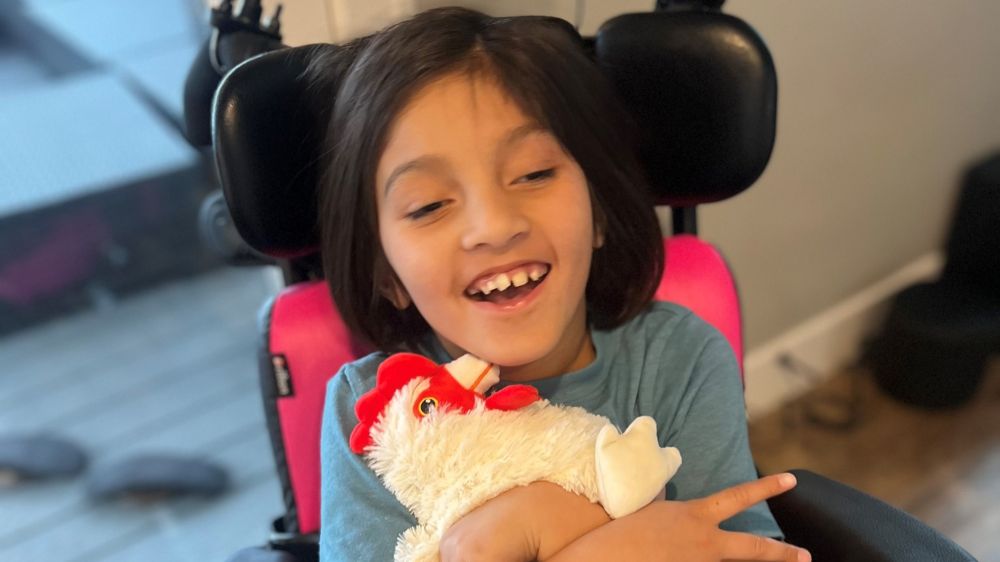What is deep brain stimulation?
Deep brain stimulation (DBS) is a treatment option prescribed for children with disorders that cause involuntary muscle contractions. These movement disorders are often caused by a complex underlying condition such as cerebral palsy. DBS can give patients better control over their muscle movements or reduce the severity of repetitive stiff, twisting, or exaggerated motions.
What happens during DBS surgery?
DBS surgery involves implanting a device known as a neurostimulator under the skin of the belly or chest, as well as a flexible insulated wire (called a “lead”) that is implanted in the brain. This neurostimulator delivers constant, low-voltage electrical impulses to specific areas of the brain. These electrical impulses block or change the abnormally functioning neurons (cells that send messages between the brain, spinal cord, and body to help muscles to move the body) that cause uncontrolled movement, bringing relief from these symptoms to the patient.
DBS is both adjustable and reversible.
Who benefits from deep brain stimulation?
People who are unable to control their muscle movements can benefit from deep brain stimulation. This includes children, teens, and young adults with a complex underlying diagnosis such as cerebral palsy, traumatic brain injury, stroke, or birth complications.
Common movement disorders in children include dystonia, chorea, and tardive dyskinesia, all of which are considered hyperkinetic—in other words, these disorders cause too much involuntary muscle movement. DBS can give individuals with these disorders better control over their muscle movements and provide relief from the severity of their symptoms.
Life After DBS Surgery: Hazel's Story

At Gillette Children’s, patients are evaluated for DBS by the expert pediatric neurologists and neurosurgeons of the Complex Movement Disorders (CMD) Clinic. One patient who has benefited from the expertise at the CMD Clinic and DBS is ten-year-old Hazel Kim, who has quadriplegic cerebral palsy. Gillette rehabilitation medicine specialist Marshall Taniguchi, MD referred Hazel to the CMD Clinic following an office visit. “That’s when everything changed,” says Hazel’s mom, Lindsay. “We met [pediatric neurosurgeon] Dr. Graupman and [pediatric neurologist] Dr. Feyma, and that started a transformative journey—including the decision to pursue a deep brain stimulation implant.”
Lindsay shares that DBS has given Hazel the chance to gain more control over her muscle movements, which helps her to engage more fully with the world around her.
In the two years since Hazel’s DBS surgery, her family has noticed gradual but meaningful changes in her movements. Hazel is now able to cross her arms at her chest when upset—a powerful and universally understood sign of frustration. “We’ve also seen improvements in her trunk control, her ability to wrap her arms around people and objects, reduced oral secretions, and increased babbling.” Cognitively, Hazel remains on track with her fourth-grade peers.
As for handling the day to day, Lindsay says, “We live in the present and continue to strive for her bright future!”
Could your child or teen benefit from deep brain stimulation? Ask your pediatrician for a referral to Gillette's Complex Movement Disorders Clinic, or request a Pediatric Expert Consult today!
 Home Page
Home Page

